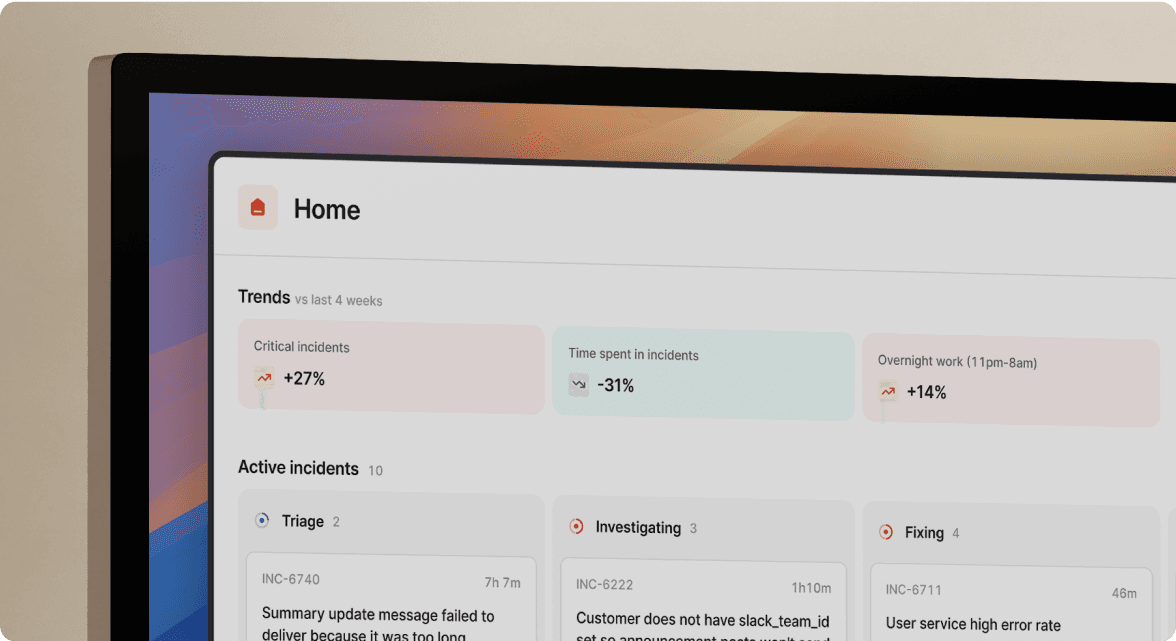
Engineering
Building On-call: The complexity of phone networks
 Leo Sjöberg
Leo SjöbergJuly 16, 2024

Engineering
Building On-call: Building a multi-platform on-call mobile app
 Rory Bain
Rory BainJuly 15, 2024

Engineering
Migrating JSONB columns in Go
 Louis Heath
Louis HeathJuly 11, 2024

Engineering
Behind the scenes: Launching On-call
 Henry Course
Henry CourseJuly 9, 2024

Engineering
Onboarding yourself as an engineer at incident.io
 Pip Taylor
Pip TaylorJuly 5, 2024

Engineering
Managing your resources in Terraform can be literally easy and actually fun
 Lisa Karlin Curtis
Lisa Karlin CurtisJune 25, 2024

Engineering
Shifting left on incident management
 Norberto Lopes
Norberto LopesApril 7, 2024

Engineering
Why we chose JavaScript over CEL
 Macey Baker
Macey BakerMarch 21, 2024

Engineering
Running projects for AI features
 Aaron Sheah
Aaron SheahJanuary 23, 2024
Stay in the loop: subscribe to our RSS feed.
So good, you’ll break things on purpose
Ready for modern incident management? Book a call with one of our experts today.

We’d love to talk to you about
- All-in-one incident management
- Our unmatched speed of deployment
- Why we’re loved by users and easily adopted
- How we work for the whole organization




